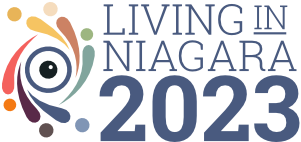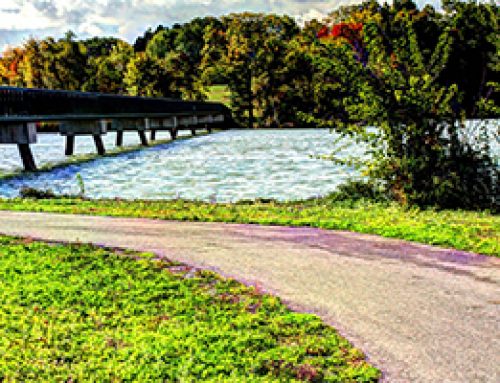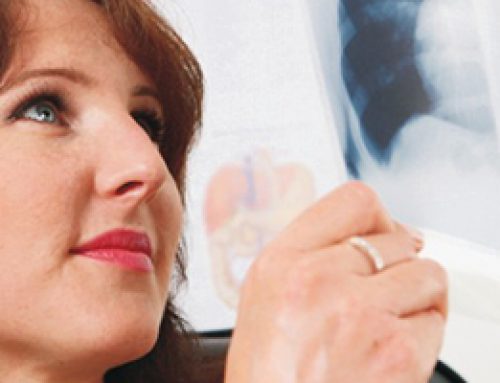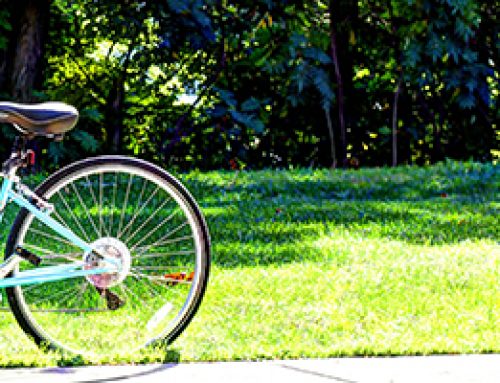Note to Reader: Information in this Sector often includes the acronym HNHB LHIN, referring to the Hamilton Niagara Haldimand Brant Local Health Integration Network. Information about the HNHB LHIN can be found at: http://www.hnhblhin.on.ca/home.aspx
Number of Specific Health Facilities in Niagara
Niagara Health System
The NHS has six sites with inpatient and outpatient clinics focused on acute care, surgical care, emergency and urgent care, kidney care, complex care, mental health and addiction, long term care and cancer care. The NHS has 4,256 employees, 650 physicians and 1,100 volunteers, with an annual operating budget of approximately $468 million.
Source: Niagara Health System
Retrieved From: http://www.niagarahealth.on.ca/en/about-us
Hotel Dieu Shaver Health and Rehabilitation Centre
HDSHRC is a 134 bed organization focused on complex care which includes rehabilitation programs that serve adult residents. As well as audiology services are provided to infants, children and adults and serve all of Niagara. A full list of services can be found at the following link.
Source: HDSHRC website
Retrieved from: http://www.hoteldieushaver.org/fast-facts.cfm
Community Health Centres
There are 4 Community Health Centres in Niagara including Quest Community Health Centre, Niagara Falls Community Health Centre, Bridges Community Health Centre and the Centre de santé communautaire Hamilton/Niagara.
Retrieved from:
- http://www.questchc.ca/niagararegion.html
- http://nfchc.ca/
- http://www.bridgeschc.ca/page/home
- http://www.cschn.ca/english/
Long Term Care
Long term care organizations range from not for profit, for profit and regional run homes. There are 31 long term care homes in Niagara with 3529 beds.
Source: hnhbhealthline.com
Retrieved from: http://www.hnhbhealthline.ca/listServices.aspx?id=10665 and http://healthcareathome.ca/hnhb/en/care/Documents/Long-term%20care%20wait%20time%20reporting%20Aug%202014%20-%20Niagara.pdf
Home Care Services
The Community Care Access Centre provides access to numerous services and resources to support individuals in their home, school and community. These range from personal visits and regular check-ins, nursing and rehabilitation services, medical supplies and equipment, nutritional assistance and social work. The CCAC in the HNHB LHIN served 81,543 across the LHIN (This includes individuals outside of Niagara).
Source: CCAC
Retrieved from: http://healthcareathome.ca/hnhb/en/Who-We-Are/About-CCAC/Fast-Facts
Hospital Standardized Mortality Ratio and Hospital Readmissions
Hospital Standardized Mortality Ratio is now used as a measure to assess the comparison of hospital deaths to the average Canadian experience.
“The hospital standardized mortality ratio (HSMR) is an important measure to improve patient safety and quality of care in Canadian hospitals.
The HSMR adjusts for factors that affect in-hospital mortality rates, such as patient age, sex, diagnosis, and admission status. It then compares the actual number of deaths in a hospital with the average Canadian experience. The ratio provides a starting point to assess mortality rates and identify areas for improvement to help reduce hospital deaths.” (CIHI, 2014)
Source: CIHI
Retrieved from: http://www.cihi.ca/cihi-ext-portal/internet/en/tabbedcontent/health+system+performance/quality+of+care+and+outcomes/hsmr/cihi022025
The HNHB LHIN rate is the same as that of the Niagara Health System which is 88, as compared to the Canadian number which is 89.

Retrieved from: http://ourhealthsystem.ca/#!/search/ct/470

Retrieved from: http://ourhealthsystem.ca/#!/search/007/7000010020
Readmissions to hospital within 30 days are often seen as an indicator of inadequate care. In the HNHB LHIN area we are at 8.8% which is slightly higher than the Canadian average. In the Niagara Health System the rate is 8.1%.

Retrieved from: http://ourhealthsystem.ca/#!/search/007/7000010020
Number of Physicians and Specialists in Niagara
Having qualified and accessible health care providers is an important part of ensuring a healthy community. There are a many different health providers from nursing, health promotion, health inspectors, personal support workers, speech pathologist, physicians and specialists. However, numbers for each of these professions are difficult to collect. The statistics commonly collected include physician rates and specialists in specific regions.
In the HNHB LHIN as of 2012 there were 1072 active family physicians, with 103 physicians engaged in family medicine and emergency medicine. There is a total of 1553 specialists in the HNHB LHIN. A document including 2012 statistics for the number and type of physicians in the HNHB (Hamilton Niagara Haldimand Brant) LHIN (Local Health Integration Network) can be found on the Niagara Knowledge Exchange, at the following link.
Source: Ontario Physician Human Resources Data Centre: www.ophrdc.org
Retrieved From: http://www.niagaraknowledgeexchange.com/resources-publications/physicians-in-ontario-by-specialty-of-practice-and-local-health-integration-networks/


Source: Ontario Physician Human Resources Data Centre
Retrieved from: https://www.ophrdc.org/Home.aspx
When asked in a survey whether individuals had a regular medical doctor, 93.4% of individuals in the HNHB LHIN area reported that they did.

Retrieved From: http://ourhealthsystem.ca/#!/indicators/001/have-a-regular-doctor/;primary3504;primarybreakout;province35;secondary35;trend%281,35%29;/
Wait Times for Emergency Room Visits, Diagnostic Imaging and Surgeries in Niagara
The tracking and reporting of wait times has grown extensively over the past 3 years in an effort to ensure more accountability to the public. In 2011, the wait times reported were related to specific cancer treatments, certain diagnostics and hip and knee replacements.
Now there is an extensive, publicly accessible data base that allows for the search of wait times by numerous health services including emergency room wait times, diagnostic imaging and surgery. Ontario Wait Times are available at the following link.
Source: Ontario Ministry of Health and Long Term Care
Retrieved from: http://www.health.gov.on.ca/en/pro/programs/waittimes/default.aspx
Emergency Response Times in Niagara
Emergency Call Volume
From 2010 to 2012 there was a 7% decrease in lights and siren emergency responses. However in that time frame, Niagara EMS experienced an increase in total responses of 4.2%. This includes both lights and siren emergency responses and less urgent non-lights and siren responses.
Niagara EMS uses an evidenced based Triage Tool called Medical Priority Dispatch System (MPDS) to help determine the urgency of the emergency response based on evidenced based questioning of the 911 caller. Niagara EMS routinely analyzes the urgencies of the responses against the condition of the patients upon arrival of the paramedics in order to evaluate the efficiency of the system to match the priority of the response with the actual condition of the patient. Where appropriate, the priority of the response (either lights and siren and emergent or non-lights and siren or less urgent) may be increased or decreased based upon this analysis. It’s important to remember that the decrease in emergency responses may actually be an efficiency of the system rather than an actual decrease in emergencies. Niagara EMS has become more efficient at recognizing true emergencies based on evidenced based historical data.
Source: Obtained via email correspondence with Karen Lutz-Graul, B.Sc.C.P., ACP (Commander, Quality Assurance & Performance Standards); Niagara Emergency Medical Services www.niagararegion.ca
Niagara Medical Emergency Services
The following Measures provide context about features of Niagara medical emergency services.
Measures:
- Number of ambulance bases = 17
- Number of service vehicles = 26 transport vehicles, 1 Community Response Unit, 3 Superintendent Vehicles
- The total number of Advanced (ACP) and Primary Care Paramedics (PCP) in Niagara = 273.
- Number of calls a year to EMS in Niagara
- 2010 – 76,834
- 2011 – 78,434
- 2012 – 80,049
- The Total Call volume increase is 4.2% up to the end of 2012
The following chart illustrates how many calls EMS providers received per 1,000 population basis.

Measures
- Average times that it takes dispatchers to send out the call
- Niagara
- 2010: 0:01:51
- 2011: 0:01:51
- 2012: 0:01:55
- Niagara
- Time between call received and time arrived
- Niagara
- 2010: 0:09:45
- 2011: 0:09:43
- 2012: 0:09:53
- Niagara
- Percentage of ambulance time lost to hospital turnaround off-loads
- 2010: 13.1%
- 2011: 12.6%
- 2012: 9.9%

Source: 2012 Ontario Municipal Benchmarking Initiative (OMBI) Performance Measurement Report
Retrieved From: http://www.ombi.ca/wp-content/uploads/2012-Performance-Report-without-HR.pdf








